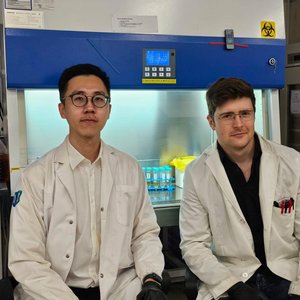During his presentation at Aquafeed Horizons 2018, Maarten Jay van Schoonhoven discussed the serious concerns and treatment solutions for mycotoxin contamination.
Mycotoxins are secondary metabolites produced by fungi that are capable of causing disease and death in humans and other animals. Chronic intoxication is now widely considered to be the most important impact of mycotoxins, particularly in developing countries. However, mycotoxins effects on aquaculture species are poorly studied.
“Mycotoxincs are immunosuppressants,” explained Mr. Van Schoonhoven. “They make it easier for bacteria or viruses to cause disease. On the other hand they reduce feed performance. Mycotoxin contamination will cost the farmer money on the feeding side and also on the health side.”
Plant origin raw materials and by-products are often used to replace fishmeal in aquatic feeds, but they are a high mycotoxin risk. Therefore, it is essential to implement good quality control, analyze ingredients used for feed production, use mold inhibitors, and use a broad-spectrum mycotoxin binder such as aluminosilicates (clays).
Mycotoxins are especially dangerous when more than one is present. “If you have different types of mycotoxins that work synergistically, they might all be below the allowed limits but together in the long term they will cause reduced performances in feed and reduce health status, allowing the disease to have larger impact,” Mr. Van Schoonhoven. explained.
In order to most effectively combat mycotoxins, Mr. Van Schoonhoven. mentioned that a broad-spectrum product is the best line of defense. “Each mycotoxin has its own molecular structure,” he stated. “Each can be bound and neutralized.”
At the conference, Mr. Van Schoonhoven shared details on the Olmix technology that can extract specific types of structural polysaccharides out of seaweeds. “These are then used to increase the space in between the layers of clay, so you have a space that’s big enough for binding fumonisin and Deoxynivalenol (DON) type molecules.
Olmix conducted trials to test their MTx+ mycotoxin binder on juvenile red tilapia, and found that weight gain and final body weight were higher in fish fed a diet containing MTx+ than fish fed a traditional commercial diet, while feed conversion ratio was 8.2% lower.
Click here to learn more about Olmix and its products.










